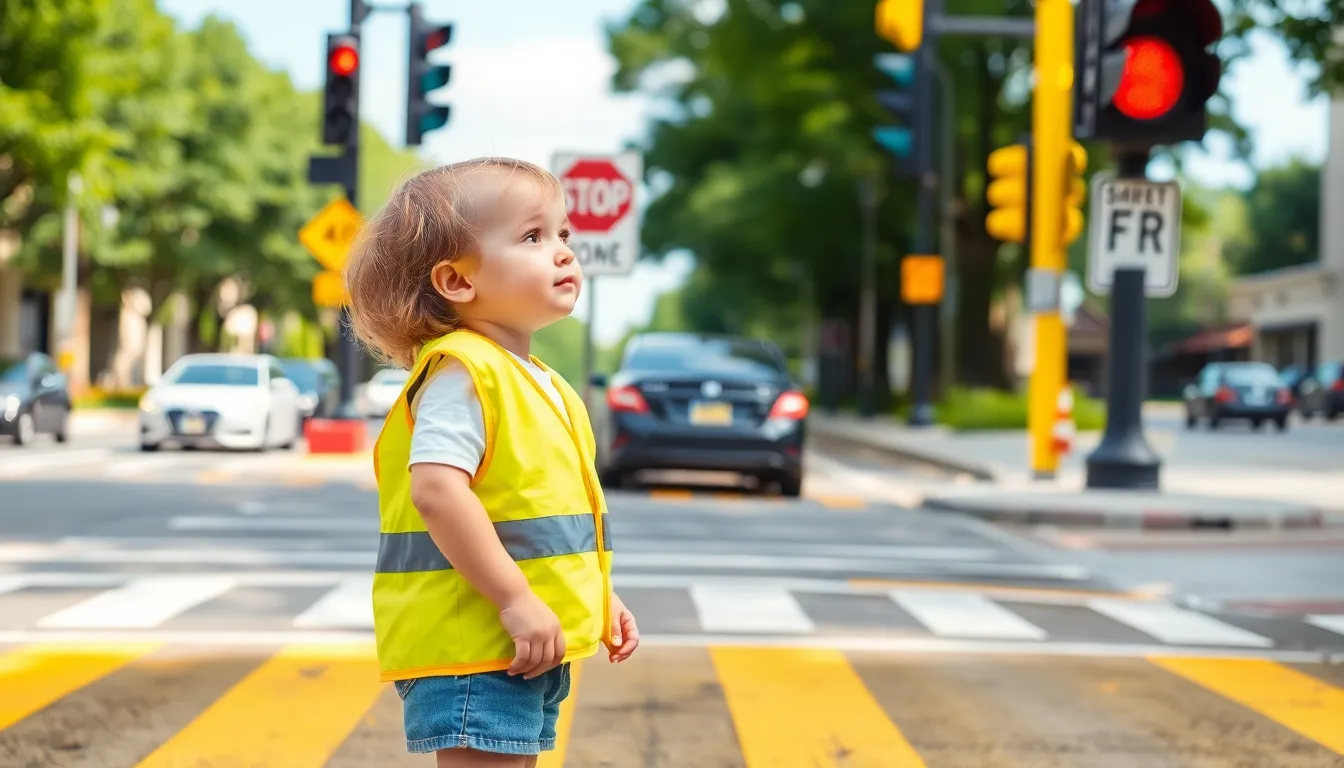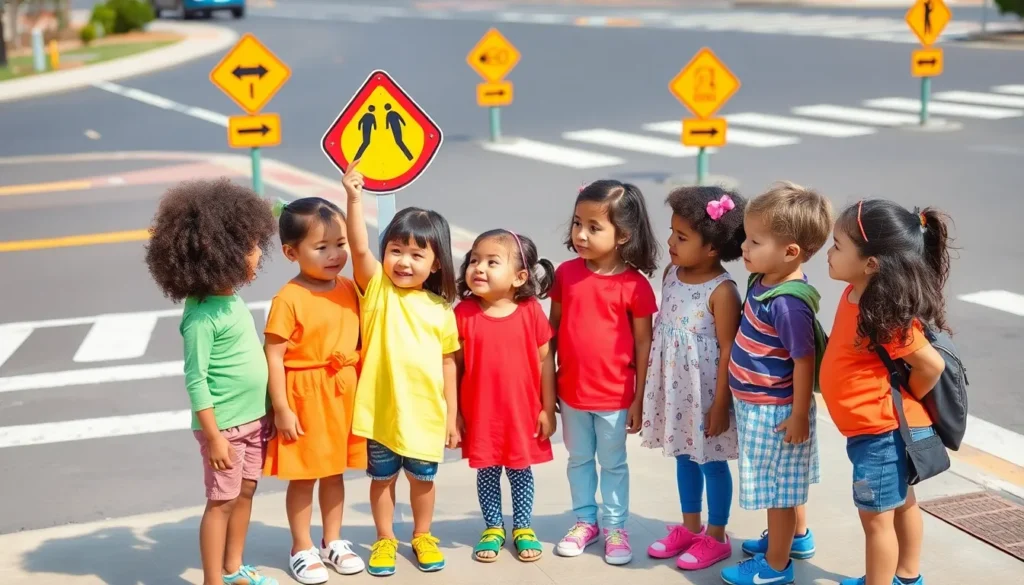Table of Contents
ToggleEvery parent knows that preschoolers are like little explorers, constantly on the lookout for their next big adventure. But when it comes to road safety, those adventures can take a dangerous turn. With tiny feet darting across sidewalks and curious minds oblivious to traffic, teaching preschool road safety becomes a top priority.
Imagine a world where kids confidently navigate the streets like seasoned pros instead of playing a game of “dodge the car.” By instilling essential road safety habits early on, parents can turn their little ones into safety superheroes. This article dives into practical tips and fun strategies that make learning about road safety engaging for preschoolers. After all, who wouldn’t want their child to be the coolest kid on the block—while staying safe?
Importance Of Preschool Road Safety
Teaching preschoolers about road safety lays the foundation for lifelong safe habits. Young children often display curiosity and a desire to explore, which can lead them to dangerous situations without proper guidance. Parents play a crucial role in shaping these habits early on, allowing children to recognize potential hazards on the road.
Engaging preschoolers in discussions about traffic signals and pedestrian crossings fosters awareness. By incorporating visual aids, such as colorful posters and interactive games, children learn to identify road signs effectively. Consistency matters; regularly practicing safety drills makes children more comfortable and attuned to their surroundings.
Statistics reveal that children aged 5 to 14 are at higher risk of pedestrian accidents. Educating them about road safety reduces this risk significantly. Awareness campaigns in the community serve to reinforce the lessons learned at home, creating a supportive environment that encourages safe behavior.
Additionally, while walking to school or the park, children should master the rules of the road. Observing adult behaviors provides valuable lessons about safety. Being a positive role model by adhering to road rules can inspire children to replicate these behaviors.
Involving preschoolers in road safety discussions paves the way for a culture of safety. It empowers them with the knowledge necessary to make decisions that protect them. Creating an ongoing dialogue about road safety ensures children understand the importance of being vigilant while navigating their surroundings.
Common Hazards For Preschoolers

Preschoolers face various hazards while navigating roads. Recognizing these dangers helps in preventing accidents and ensuring their safety.
Traffic Patterns
Traffic patterns pose a significant risk to preschoolers. Cars, bicycles, and pedestrians create a dynamic environment that can confuse young children. They may not understand the significance of signals or anticipate vehicle movements. According to the National Highway Traffic Safety Administration (NHTSA), many accidents occur at intersections due to poor visibility and inattentive drivers. Observing the flow of traffic teaches preschoolers to wait for safe moments to cross. Engaging them in discussions about safe spots for crossing reinforces road sense. Practicing these observations during walks enhances their awareness of traffic patterns.
School Zones
School zones represent another critical hazard for preschoolers. These areas often witness increased vehicle traffic during drop-off and pick-up times. Speed limits reduce in these zones, yet impatience may still prevail among drivers. Children might get overwhelmed by the activity, making them less cautious. According to the Centers for Disease Control and Prevention (CDC), nearly 100 children are injured daily in pedestrian accidents. Teaching preschoolers to recognize school zone signs and understand designated crossing areas builds their safety confidence. Streets near schools often have marked crosswalks, serving as essential guides. Regular reminders about staying vigilant in school zones instill protective habits in young children.
Effective Road Safety Education
Teaching preschoolers about road safety ensures they understand their surroundings. Early education builds confidence and attentiveness. Proper guidelines give parents a structured approach.
Teaching Guidelines For Parents
Parents should start by discussing traffic signs and signals clearly. Pointing out real-life examples during walks helps reinforce lessons. Encouraging children to speak up when they see unsafe behaviors fosters vigilance. Setting a regular practice schedule for safety drills builds familiarity with protocols. Teaching preschoolers the importance of waiting for green lights before crossing enhances their understanding of safety. Reinforcing key messages consistently transforms them into proactive participants in their own safety.
Interactive Learning Activities
Engaging activities make learning enjoyable and effective. Use colorful traffic signs in games to help children recognize them. Incorporate role-playing scenarios where kids practice crossing streets safely. Utilize interactive apps designed for road safety education to reinforce lessons through technology. Consider introducing songs or rhymes that highlight safety rules for better retention. Bringing road safety to life through hands-on experiences equips children with the skills needed to navigate their environment confidently.
Role Of Schools In Promoting Safety
Schools play a crucial role in enhancing preschoolers’ road safety awareness. Integrating road safety into the curriculum ensures students learn essential safety behaviors early.
Curriculum Integration
Teachers can incorporate road safety lessons into daily activities. Interactive storytelling engages preschoolers while they learn about traffic signals and pedestrian rules. Each class can feature hands-on activities, such as role-playing crossing the street. These exercises help children visualize safe practices in real situations. Educators may also use visual aids, like posters of road signs, to reinforce learning. Implementing safety education regularly embeds these concepts into young minds. Schools can establish a dedicated week for road safety awareness, involving fun activities and demonstrations.
Community Involvement
Collaboration with local authorities significantly enriches road safety education. Schools can invite law enforcement officers to discuss traffic safety with students. Engaging parents in workshops fosters a shared responsibility for safety messaging. Safe routes to school programs further encourage community involvement. Local businesses can support safety campaigns by distributing educational materials. Creating a safety ambassador program empowers older students to mentor younger ones. Community events, like safety fairs, provide engaging platforms to reinforce road safety principles. Building partnerships with local organizations enhances resources and ensures consistent messaging.
Teaching preschoolers about road safety is vital for their protection and well-being. By fostering awareness and instilling good habits early on, parents and educators can empower children to navigate their environments confidently. Engaging activities and consistent practice make learning enjoyable while reinforcing essential safety skills.
As children become more aware of their surroundings and the rules of the road, they develop into responsible individuals who prioritize safety. Community involvement further enhances these efforts, creating a supportive atmosphere for learning. With the right guidance and resources, preschoolers can transform into proactive safety superheroes, ready to face the world with knowledge and vigilance.







